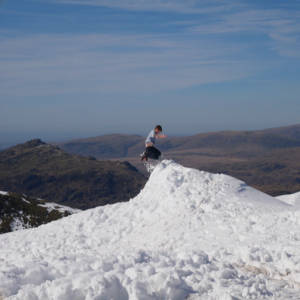Revolution Monument
Due to a Pokémon Go raid I was up at the Monument at sun set! Only the second time I have been there in 7.5 years...
write up from Visit Cumbria
Castle Howe, Kendal’s undisputed first castle, lays on the hill side over looking the town. The earthwork remains are sandwiched between Gilling Gate and Beast Banks, and are easily accessible from both sides by footpaths.
The remains consist of an extremely well defined motte, rising to around 11 metres, and around 18 metres in diameter at the summit. The base of the motte measures around 46 metres, and is surrounded by ditches and embankments. The bailey lays to the East of the motte, and is roughly triangular in shape, and has been destroyed by the creation of a public park, once a bowling green.
There have been numerous dates put forward for its creation. One suggested date is 1092, a date which ties in with the subjugation of part of Westmorland by the Normans in their push North. The Barony of Kendal fell at the hands of Ivo de Taillebois at about this time. Ivo was brother to the Earl of Anjou, and an avid follower of Duke William of Normandy, supporting the Duke in his invasion of England in 1066. As a reward for his unfailing military support and success, Ivo was granted the Barony of Kentdale, a title that brought with it huge swathes of land in what is now Yorkshire, Lancashire and Cumbria. As well as Castle Howe in Kendal, Ivo also has connections with Kirkby Londale’s motte and bailey castle on Ruskins Brow, and towns right across the South Lakes area, including Beetham, Kirkby Stephen, Kirkby Lonsdale, Heversham and Burton in Kendal.
Kendal castle, to the East of the earthworks, was probably built whilst Castle Howe was still being used. There’s no evidence to suggest that Castle Howe was directly replaced by the new castle the other side of the river. If anything, there’s every possibility that Castle Howe was the baronial centre of Kirkland, and that Kendal castle was the baronial centre of Kentdale – but this is only supposition.
Castle Howe eventually became redundant, as did the castle, and the administrative centre of Kendal moved to the Moot Hall in the centre of town (Now occupied by Thorntons).
In 1788, to celebrate the centenary of the revolution of 1688, an obelisk was erected on the summit of Castle Howe. The monument was designed by Kendalian architect Francis Webster.

Comments
Sign in or get an account to comment.


